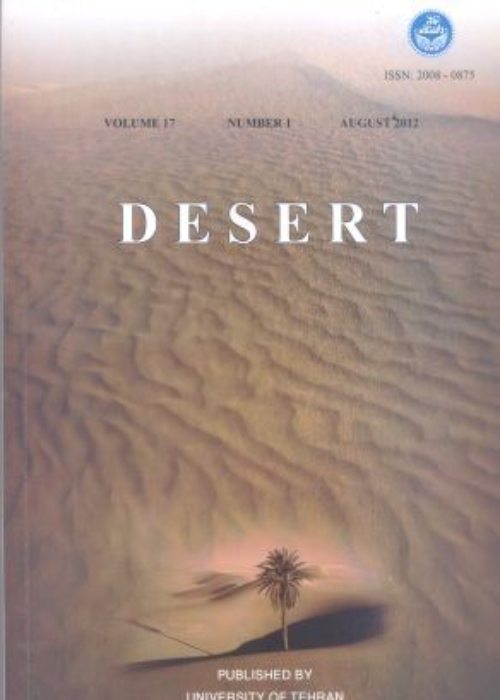Statistical and Geostatistical Appraisal of Spatial Variability of Aggregate Stability and Aggregate-Associated Organic Carbon Content on a Catchment Scale in a Semi-arid Region, Central Iran
Author(s):
Abstract:
In a semiarid region of central Iran, effects of parent materials, physiography and landscape position, land use, and management practices on association of organic carbon with secondary (aggregates) particles and aggregate stability can have important consequences in terms of carbon sequestration and budgeting, deciding on the proper land use strategy and suitable soil conservation practices. It was used wet sieved aggregates to evaluate the effects of different factors on soil aggregate stability and organic carbon concentration within three aggregate size fractions (>2 mm, 1-2 mm, <1 mm). 111 soil samples were collected to measure water stable aggregates (WSA), aggregate organic carbon concentration (OC), and mean weight diameter (MWD). Some other related soil and terrain properties including bulk density, infiltration rate, saturated hydraulic conductivity and erodibility index were also measured. Analyses of variance indicated that water stability of aggregates was influenced by aggregate size. Higher percentage of water stable aggregates was found for microaggregates (< 1 mm), followed by mesoaggregates (1 to 2 mm). Aggregate organic carbon content was highest in mesoaggregates (9 g kg-1), followed by microaggregates (7 g kg-1), while the least OC concentration was found in macroaggregates (3 g kg-1). Both aggregate size fraction and slope aspect significantly impacted aggregate organic carbon concentration. Although a significant effect of aggregate size on aggregate organic carbon content was found, however, our findings did not support the model of aggregate hierarchy. Both MWD and GMD were significantly impacted by aggregate size fractions. Geostatistical analysis showed that the measured soil attributes exhibited differences in their spatial patterns in both magnitude and space at each aggregate size fractions. The relative nugget variance for most aggregate-associated properties was lower than 45%. The range for water stable aggregates was almost similar (3 km) for the three studied aggregate size classes. The range for aggregate-associated organic carbon contents ranged from about 3 km for macroaggregates to about 6.5 km for mesoaggregates. Kriged maps of predicted WSA, OC and MWD for the three studied aggregate size fractions showed clear spatial patterns. However, a close spatial similarity (coregionalization) was observed between WSA and MWD.
Keywords:
Language:
English
Published:
Pages:
27 to 39
magiran.com/p1152303
دانلود و مطالعه متن این مقاله با یکی از روشهای زیر امکان پذیر است:
اشتراک شخصی
با عضویت و پرداخت آنلاین حق اشتراک یکساله به مبلغ 1,390,000ريال میتوانید 70 عنوان مطلب دانلود کنید!
اشتراک سازمانی
به کتابخانه دانشگاه یا محل کار خود پیشنهاد کنید تا اشتراک سازمانی این پایگاه را برای دسترسی نامحدود همه کاربران به متن مطالب تهیه نمایند!
توجه!
- حق عضویت دریافتی صرف حمایت از نشریات عضو و نگهداری، تکمیل و توسعه مگیران میشود.
- پرداخت حق اشتراک و دانلود مقالات اجازه بازنشر آن در سایر رسانههای چاپی و دیجیتال را به کاربر نمیدهد.
In order to view content subscription is required
Personal subscription
Subscribe magiran.com for 70 € euros via PayPal and download 70 articles during a year.
Organization subscription
Please contact us to subscribe your university or library for unlimited access!


